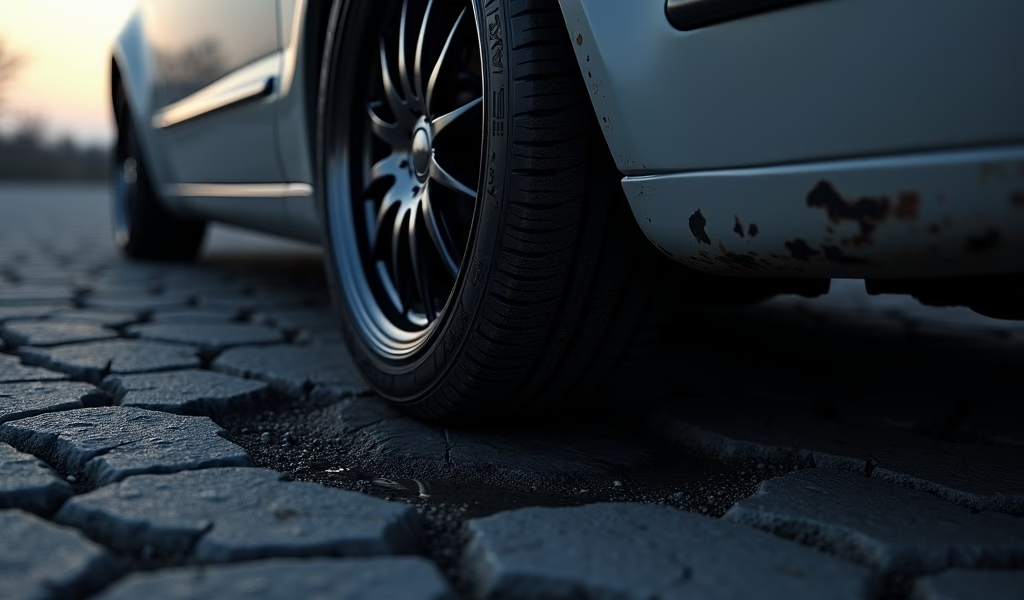Overview
This article presents seven essential car maintenance strategies including regular washing, fluid maintenance, tire care, battery upkeep, filter replacements, preventative maintenance scheduling, and driving habits that extend vehicle life. The author emphasizes treating your car as having a unique “character” whose signals should be understood to prevent expensive repairs while maintaining safety, performance, and longevity.
Table of Contents
- Introduction
- Regular Washing and Detailing: Your Car’s First Impression
- Fluid Level Maintenance: Your Vehicle’s Lifeblood
- Tire Care and Rotation: Where Rubber Meets Road
- Battery Maintenance: Your Car’s Heartbeat
- Filter Replacements: Your Car’s Breathing System
- Preventative Maintenance: Staying Ahead of Problems
- Driving Habits That Extend Vehicle Life
- Conclusion
- Frequently Asked Questions
Introduction
Your vehicle isn’t just a collection of parts—it’s a character with its own unique personality. At Knows Your Car, we believe the relationship between you and your automobile is special. Just like people, cars have their own quirks, sounds, and behaviors that tell you exactly what they need.
Truly knowing your car—understanding its whispers before they become shouts—is the foundation of proper maintenance. I’ve spent over 20 years in auto repair, and I can tell you with certainty: the owners who really listen to their vehicles spend less on repairs and enjoy more reliable transportation.
Think about it this way. When you know what your car is trying to tell you through that subtle vibration or unusual sound, you’re addressing issues before they become expensive problems. This intimate knowledge transforms car care from a chore into a relationship.
The car characters concept we’ve developed helps you personify your vehicle, making maintenance intuitive rather than technical. Is your car a reliable workhorse that needs consistent care? A high-performance athlete requiring specialized attention? Or perhaps a seasoned veteran showing signs of wisdom and wear?
Let’s explore seven proven car care tips that will not only save you money but also deepen your understanding of your vehicle’s character. These strategies have saved my customers thousands of dollars over the years while extending their vehicles’ lifespans significantly.
Regular Washing and Detailing: Your Car’s First Impression

Think of your car’s exterior as its protective skin. Regular washing isn’t just about looks—it’s about preserving structural integrity and value. As someone who’s restored countless vehicles, I can tell you that consistent cleaning prevents damage that can lead to expensive repairs later.
Depending on your environment, washing frequency should adjust accordingly:
- Average conditions: Every two weeks
- Coastal areas (salt exposure): Weekly
- Winter regions with road salt: Weekly during winter months
- High pollution areas: Weekly
When washing at home, remember these professional tips:
- Use automotive-specific soap, never dish detergent which strips protective wax
- Implement the two-bucket method—one for soap solution, one for rinsing your mitt
- Wash from top to bottom, as lower panels collect the most contaminants
- Dry with microfiber towels to prevent water spots and scratches
Professional detailing 2-3 times yearly provides deep cleaning and protection beyond what most home washes achieve. Between professional services, try these quick detailing tricks:
- Use a clean, slightly damp microfiber cloth with a single drop of olive oil to dust your dashboard
- Clean air vents with a small paintbrush or foam brush
- Keep a spray bottle with diluted car-safe cleaner for quick interior wipe-downs
Remember, a well-maintained exterior prevents rust formation that can compromise structural integrity. Proper washing techniques protect your clear coat, which shields the paint from UV damage. When you truly know your car, you’ll recognize that regular cleaning is preventative medicine, not just cosmetic care.
Fluid Level Maintenance: Your Vehicle’s Lifeblood
If your car’s body is its external character, then fluids are its internal lifeblood. Each fluid serves a vital function in keeping your vehicle’s systems running smoothly. Neglected fluids are behind many of the catastrophic failures I’ve diagnosed over my career.
Essential fluids to monitor in your vehicle include:
- Engine oil: Lubricates moving parts and prevents metal-on-metal contact
- Coolant/antifreeze: Regulates engine temperature in both hot and cold extremes
- Brake fluid: Transfers force from your brake pedal to the braking mechanism
- Power steering fluid: Enables smooth, responsive steering
- Transmission fluid: Lubricates and cools transmission components
- Windshield washer fluid: Maintains visibility during adverse conditions
Checking these fluids becomes second nature once you know your car’s specific access points. Your owner’s manual will show precisely where dipsticks and reservoirs are located. Most fluids should be checked with the engine cool and on level ground—though transmission fluid often requires the engine to be running and warm.
Fluid replacement intervals vary by vehicle and driving conditions:
- Engine oil: Every 3,000-10,000 miles (conventional oil needs more frequent changes than synthetic)
- Coolant: Every 30,000-60,000 miles
- Brake fluid: Every 2 years or when it darkens significantly
- Transmission fluid: Every 30,000-100,000 miles (some newer transmissions claim “lifetime” fluid, but most mechanics recommend changes around 60,000 miles)
Pay attention to warning signs your car’s character is communicating to you. Dark, gritty oil, low fluid levels, burning smells, or dashboard warning lights are your vehicle’s way of saying “I need attention.” Ignoring these signals can transform a simple fluid change into an engine rebuild or transmission replacement.
As a real-world example, I recently had a customer ignore low oil warnings because “the car was still running fine.” By the time they brought it in, metal shavings in the oil pan indicated severe engine damage. Knowing your car means respecting these warnings before catastrophic damage occurs.
Tire Care and Rotation: Where Rubber Meets Road
Your tires represent your car’s only contact with the road, making them critical for both safety and performance. I often tell customers to think of tires as their vehicle’s shoes—they need proper fit, regular care, and occasional replacement. A car with a sporty character might need performance tires, while a family SUV prioritizes all-season dependability.
Proper tire pressure isn’t just about avoiding flats—it directly affects your handling, braking distance, fuel economy, and tire lifespan. The National Highway Traffic Safety Administration estimates that properly inflated tires can improve gas mileage by up to 3%—significant savings over time.
Check pressure monthly (including your spare) when tires are cold. Use the PSI recommendation found on your driver’s door jamb sticker—not the maximum PSI printed on the tire itself, which represents the tire’s limit, not your vehicle’s optimum.
Rotation is essential because each tire position experiences different forces. Front tires on front-wheel-drive vehicles handle steering and most braking force, wearing differently than rear tires. Rotating every 5,000-7,500 miles ensures even wear and maximum tire life, potentially saving hundreds of dollars annually.
Alignment often gets overlooked, but it significantly impacts tire wear and fuel efficiency. When your car pulls to one side or your steering wheel isn’t centered when driving straight, you’re experiencing alignment issues. Have alignment checked annually or whenever you notice unusual handling characteristics.
For tread monitoring, the penny test works well: insert a penny upside down into your tire’s tread groove. If you can see the top of Lincoln’s head, it’s time for new tires. Alternatively, check the tread wear indicators—bars that appear when tires reach the legally worn limit.
One customer with a high-mileage yellow car from the Cars franchise doubled her tire life simply by implementing monthly pressure checks and seasonal rotations. Knowing your car means understanding that tire care is fundamental preventative maintenance that pays dividends in safety and savings.
Battery Maintenance: Your Car’s Heartbeat
Think of your car’s battery as its heart—without proper function, everything stops. Even though modern batteries require less maintenance than older types, they still deserve attention, especially as vehicles become increasingly dependent on electronics.
Recognizing battery issues early can save you from being stranded. Watch for these warning signs:
- Sluggish engine cranking when starting
- Dimming headlights, especially at idle
- Dashboard warning lights
- Electrical features functioning poorly
- A rotten egg smell (indicating battery leakage)
- Swollen or bloated battery case
- Frequent jump starts needed
Battery terminal cleaning is a simple maintenance task that delivers significant benefits. Corrosion—that white or greenish powdery substance—restricts power flow. To clean terminals safely:
- Disconnect the negative (black) cable first
- Then disconnect the positive (red) cable
- Mix baking soda and water to create a paste
- Apply with an old toothbrush
- Rinse with water and dry thoroughly
- Reconnect positive cable first, then negative
Extreme temperatures significantly impact battery performance. In summer heat, ensure your battery is securely mounted to prevent vibration damage. In winter cold, consider a battery blanket or parking in a garage, as cold temperatures can reduce battery capacity by up to 50%.
Most automotive batteries last 3-5 years. If yours is approaching this age, have it load-tested during your next service appointment. Replacement before failure saves you from being stranded and potentially damaging other electrical components.
A client with an older sedan complained about intermittent starting problems that other shops attributed to the starter. When I tested her battery, it showed adequate voltage but insufficient cranking amps—a common issue where batteries can show 12V but lack the power to start the engine. A simple battery replacement solved problems three other shops had misdiagnosed.
Filter Replacements: Your Car’s Breathing System

Filters are your car’s lungs and kidneys, keeping contaminants away from critical systems. Each filter serves a specific purpose in maintaining your vehicle’s character and performance. After 20+ years as a mechanic, I can tell you that neglected filters are behind many preventable engine and HVAC issues.
The engine air filter prevents dust, debris, and environmental contaminants from entering your engine. A clogged air filter can reduce engine performance by up to 10% and decrease fuel economy significantly. Most need replacement every 15,000-30,000 miles, but check yours annually—hold it up to a light source; if light doesn’t pass through easily, it’s replacement time.
The oil filter removes particles from your engine oil, preventing abrasive damage to engine components. Always replace it with every oil change to ensure your engine remains properly protected. Using a high-quality filter can extend oil life and improve engine protection.
The cabin air filter—often forgotten but important for your comfort and health—cleans the air you breathe inside your vehicle. It should be replaced every 15,000-25,000 miles or sooner if you notice reduced airflow from vents or musty odors. You’d be surprised how many respiratory issues I’ve seen improve once clients replace neglected cabin filters.
DIY filter replacement is straightforward on most vehicles. Your owner’s manual shows locations and procedures, and replacement filters are affordable at auto parts stores. This simple maintenance item can prevent expensive repairs later.
One customer’s chronic check engine light was traced to a severely clogged air filter that was restricting airflow to the mass airflow sensor. The $15 air filter replacement eliminated a problem that had frustrated them for months and prevented potential sensor damage that would have cost over $300.
Preventative Maintenance: Staying Ahead of Problems
The key to affordable car ownership is preventing problems before they occur. Creating a personalized maintenance calendar based on your owner’s manual recommendations is the most effective approach to maintaining your car’s unique character.
Start by reviewing your manufacturer’s maintenance schedule, found in your owner’s manual. This outlines services needed at specific intervals. Transfer these to a calendar based on your typical driving patterns, then add these seasonal considerations:
- Spring: Check A/C performance, replace winter-worn wiper blades, inspect tires for winter damage
- Summer: Verify cooling system operation, test battery (heat accelerates battery deterioration), check brake system
- Fall: Ensure heater and defroster function properly, check all lights, replace wiper blades again
- Winter: Test battery strength, verify antifreeze protection level, stock emergency supplies
Digital tools make maintenance tracking easier than ever. Apps like CARFAX Car Care, MyCarfax, and AUTOsist help you log maintenance, receive timely reminders, and store service records digitally. Many of my clients have found these tools invaluable for staying on top of maintenance needs.
Comprehensive service records prove your car has been properly maintained, potentially increasing resale value by hundreds or even thousands of dollars. One customer documented every service on their sedan and received $2,000 more at trade-in than an identical model with spotty maintenance history.
Timing belt replacement deserves special mention—it’s expensive but absolutely critical. If your vehicle has a timing belt (not all do; some use timing chains), replacement at the manufacturer’s specified interval is non-negotiable. A broken timing belt can cause catastrophic engine damage in interference engines, turning a $500-900 maintenance item into a $3,000-5,000 engine rebuild.
Remember that maintenance needs evolve as your car ages and develops its mature character. What worked during the first 50,000 miles may need adjustment as components age. Knowing your car means adapting your maintenance approach as your vehicle’s character develops over time.
Driving Habits That Extend Vehicle Life
How you drive affects your car’s longevity as much as maintenance does. Small adjustments to your driving habits can add years to your vehicle’s life while maintaining its character and performance integrity.
Practice gentle acceleration and braking—aggressive starts and hard stops wear out your engine, transmission, brakes, and tires significantly faster than smooth operation. I tell my customers to imagine a cup of coffee on the dashboard—drive smoothly enough that it wouldn’t spill.
Modern vehicles don’t need extended warm-up periods in cold weather, but they do benefit from gentle driving for the first few minutes. Allow your engine oil to circulate and reach operating temperature before demanding full performance. This is especially important for vehicles with turbocharged engines or those with sporty characters that invite enthusiastic driving.
Highway driving is generally easier on your car than city driving, as constant stopping and starting creates more wear. If your driving is primarily short trips, consider a longer highway drive occasionally to help your engine reach optimal temperature and burn off moisture that can accumulate in the oil and exhaust system.
Parking considerations matter too. When possible, park in shade to protect your interior from UV damage and reduce strain on your air conditioning system. In winter, try to park in garages to protect from freezing temperatures that stress your battery and other components.
Weight management is often overlooked. Every 100 pounds of unnecessary weight reduces fuel economy by about 1-2%. Clean out your trunk and remove roof racks when not in use. Your car’s character will thank you with improved performance and efficiency.
One customer with a high-mileage commuter car has maintained it for over 300,000 miles simply by following gentle driving practices and scheduled maintenance. The engine has never been opened, proving that how you drive is as important as what maintenance you perform.
Conclusion
Your car has a unique character—a personality that reveals itself through sounds, performance, and responsiveness. By following these seven care tips and truly getting to know your car, you’ll develop an intuitive understanding of what it needs and when it needs attention.
The financial benefits are substantial. Regular maintenance typically costs a few hundred dollars annually, while neglect can lead to repairs costing thousands. More importantly, a well-maintained vehicle is safer, more reliable, and provides better service throughout its extended lifespan.
At Knows Your Car, we believe the connection between driver and vehicle shouldn’t be mysterious or intimidating. By learning to recognize your car’s character—its normal sounds, feelings, and responses—you’ll know immediately when something changes. This awareness is your most powerful tool for preventing expensive repairs.
Car maintenance isn’t just about following a schedule—it’s about building a relationship with your vehicle. The more attentive you are to your car’s needs, the more reliable and economical your driving experience will be. Remember, your car takes care of you on every journey—return the favor by giving it the attention it deserves.
What maintenance practices have saved you money or extended your vehicle’s life? How have you come to know your car’s unique character? We’d love to hear your experiences and continue this conversation about the cars we drive and the characters they embody.
Frequently Asked Questions
What are car characters and why are they important?
Car characters refer to the unique personality traits and behaviors that different vehicles exhibit through sounds, performance, and maintenance needs. Understanding your car’s character helps you anticipate maintenance needs and address issues before they become expensive problems.
How often should I check my car’s fluid levels?
Check engine oil monthly and other fluids (coolant, brake, power steering, transmission) quarterly or before long trips. More frequent checks are recommended for older vehicles or those with known leaks.
What’s the most cost-effective maintenance to prioritize?
Regular oil changes and tire maintenance deliver the highest return on investment. These relatively inexpensive services prevent the most common catastrophic failures and extend your vehicle’s lifespan significantly.
How do I know if my car needs alignment?
Signs include uneven tire wear, vehicle pulling to one side, steering wheel off-center when driving straight, or steering wheel vibration. Have alignment checked annually or after hitting significant potholes or curbs.
Can I really save money by washing my car regularly?
Yes, regular washing prevents rust formation that can lead to structural damage and expensive body repairs. It also maintains resale value and prevents paint deterioration that would require costly repainting.


Pingback: Car Lovers’ Best 7 DIY Maintenance Tips - knowsyourcar.com